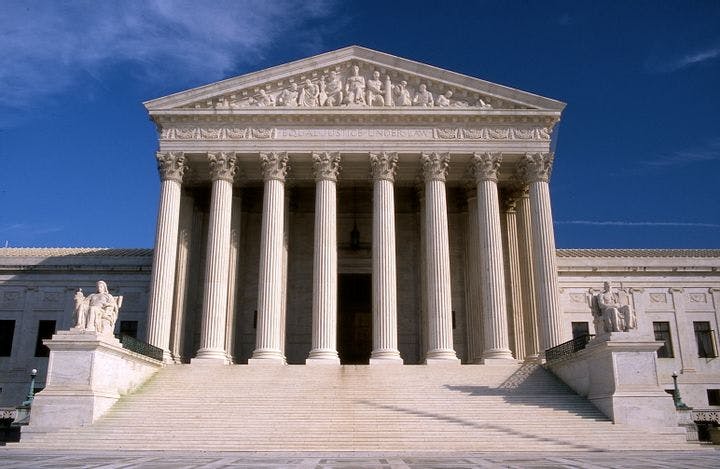Winter 2008
Geezers on the Court
– The Wilson Quarterly
Supreme Court justices used to serve shorter terms, either because of death or semi-graceful retirement. Now the average tenure surpasses a quarter-century, and many think term limits are in order.
Are Supreme Court justices staying on the bench so long that the Court itself is in need of constitutional reform? The average tenure of justices has climbed past a quarter-century. The average age of a justice upon leaving office has soared to 79. Stephen Breyer spent 11 years handling the junior justice’s job of doorman at the Court’s conferences before a new colleague arrived to relieve him of the chore.
Law professors across the political spectrum have discovered something to agree on: Lifetime tenure for Supreme Court justices is a very bad idea and term limits are needed. But “both this diagnosis and the associated remedy are misguided,” contend Justin Crowe and Christopher F. Karpowitz, political scientists at Pomona College and Brigham Young University, respectively. The problem is not that justices are serving unusually long terms—they aren’t. It’s that a whole breed of judge has disappeared: the short-term justice.
Before 1970, nearly one in three appointees spent less than about seven years on the bench. Most of the short-termers, in the years before modern medicine, became ill or died, but the next-largest category simply didn’t like the job and walked. John Rutledge, one of George Washington’s original appointees, resigned to become chief justice of the South Carolina Court of Common Pleas. John Hessin Clarke quit in 1922, complaining that he had spent too much time on trivia such as “whether the digging of a ditch in Iowa was constitutional.” Sherman Minton served barely seven years before a combination of ill health and boredom drove him to retire. President Lyndon Johnson sweet-talked Justice Arthur Goldberg into resigning to take the toothless position of United Nations ambassador so that he could appoint his friend Abe Fortas to the Court. Then Fortas himself was forced to resign less than four years later because of a financial controversy.
But since 1970, the short-termer has been extinct. Critics contend that ever-lengthening tenure decreases the democratic accountability that occurs with turnovers, increases the politicization of the confirmation process because vacancies occur so rarely, and can result in justices suffering from “mental decrepitude.” (Both William O. Douglas and Thurgood Marshall are widely considered to have been afflicted in this way by the time they stepped down.) As a remedy, some reformers propose to limit Supreme Court justices to 18-year terms.
Crowe and Karpowitz say that such a limit would only marginally increase Court turnover, and would not necessarily lift the “dead hand of the past” from the high bench. More frequent confirmations might merely speed up the cycle of messy, divisive confirmation fights. Besides, the authors note, several of the nation’s most distinguished justices stuck around for some three decades, including John Marshall, Oliver Wendell Holmes, and William Brennan.
* * *
THE SOURCE: “Where Have You Gone, Sherman Minton? The Decline of the Short-Term Supreme Court Justice” by Justin Crowe and Christopher F. Karpowitz, in Perspectives on Politics, Sept. 2007.
Photo courtesy of Flickr/Jeff Kubina
